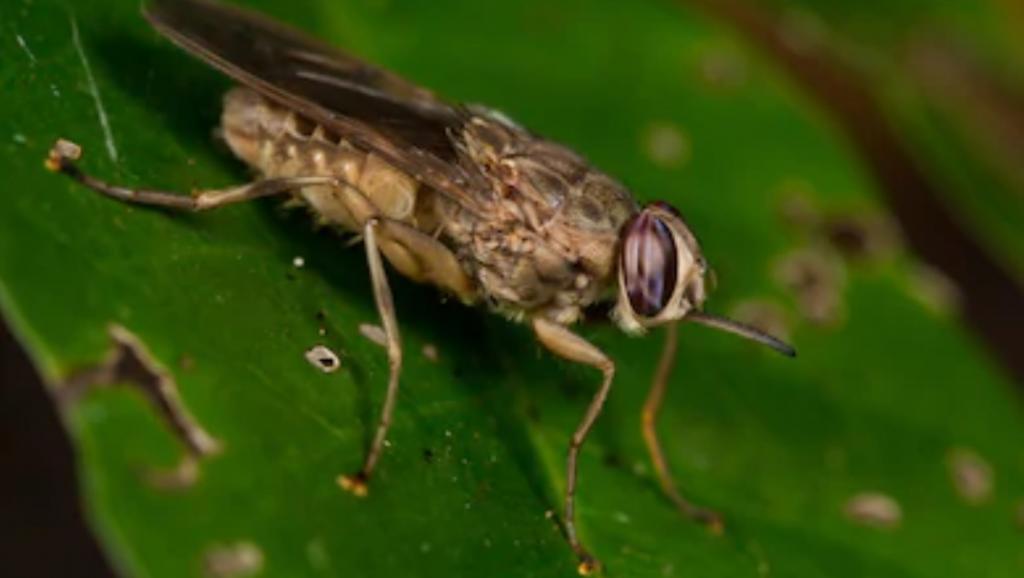
With hotter temperatures recorded in the Zambezi Valley, northern Zimbabwe, the flies that carry sleeping sickness to humans and nagana to animals are projected to move to higher, cooler areas, where there are more farmers and cattle.
Scientists have had to find a new cheap and effective solution to stop them.
A fly’s-eye-view
For years, they’ve used a sort of bovine scarecrow made of insecticide-treated black or blue fabric stretched between a frame with a small bottle of artificial cow scent used to attract the flies.
To the eye of a tsetse fly, it’s a stationary cow. And the flies, which feed on the blood of animals, receive a lethal dose of insecticide when they land on the fabric.
But now the scientists have discovered that using violet polyester material on the targets is more effective at attracting the tsetse flies, even without artificial cow scent. Polyester has also been found to be more durable, and to hold insecticide better.
“We calculated how a fly’s photoreceptors would respond to a variety of coloured fabrics to establish the attractive properties of different colours from a ‘fly’s-eye’ view,” said study leader Roger Santer, a zoologist at the Institute of Biological, Environmental and Rural Sciences at Aberystwyth University in Britain.
“We then deliberately engineered a polyester fabric to be more attractive to the flies, based upon those principles, and tested its effectiveness against savannah tsetse flies.” The findings were published on 12 December in the journal PLOS Neglected Tropical Diseases.
‘Important step forward’
The researchers found that violet polyester attracted 50 percent more female tsetse flies than black cotton or blue polyester used on traditional targets. Santer and his team called it a scientific breakthrough that could improve the lives of people across Africa.
The field tests were done at Rekomitjie Research Station in the Zambezi Valley.
RFI met veteran Zimbabwean tsetse researcher and one of the co-authors of the study, Glyn Vale in his book-lined study in Harare.
“Admittedly, it [violet fabric] is only 50 percent better. But what that means is that you can reduce by a third the number of targets you’ve got to deploy,” he said. “Economically, it’s an important step forward.”
The cheapest way to combat tsetse flies is to treat cattle with insecticide. But for that to be effective against incursions of the fly, at least three or four large cattle per square kilometre need to be present at all times, explained Vale.
That doesn’t allow for cows wandering or being herded away. Hence the need for fixed targets.
It’s hoped that the violet colour will be equally effective in trapping other members of the tsetse fly family, including riverine flies that live in countries further to the north and spread most human forms of trypanosomiasis – the other name for sleeping sickness.
Millions at risk
Tsetse flies are found in an estimated 10 million square kilometres in sub-Saharan Africa. Not only do they put millions of people at risk of the disease they kill large numbers of cattle, a key source of wealth.
In 2018, a team of researchers that included Vale published a study using data from Rekomitjie Research Station that appeared to show a correlation between the decline in tsetse fly numbers there over the previous 27 years, and a rise in mean daily temperatures.
The presumption is that the tsetse flies could move out of the valley if climate change makes higher areas more suitable.
“The trouble is that in the cooler areas is where there is a lot of farming and cattle,” explained Vale. “Then of course you want to be sure that you’ve got the cheapest, most economical, most practical means of dealing with this.”
Judging by the success of this latest research, purple cows may be the answer.

